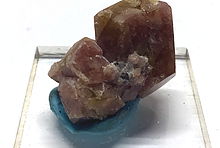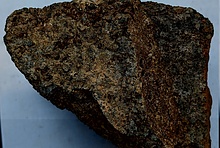Learning CenterWhat is a mineral?The most common minerals on earthInformation for EducatorsMindat ArticlesThe ElementsThe Rock H. Currier Digital LibraryGeologic Time
搜索矿物的性质搜索矿物的化学Advanced Locality Search随意显示任何一 种矿物Random Locality使用minID搜索邻近产地Search Articles搜索词汇表更多搜索选项
╳Discussions
💬 Home🔎 Search📅 LatestGroups
EducationOpen discussion area.Fakes & FraudsOpen discussion area.Field CollectingOpen discussion area.FossilsOpen discussion area.Gems and GemologyOpen discussion area.GeneralOpen discussion area.How to ContributeOpen discussion area.Identity HelpOpen discussion area.Improving Mindat.orgOpen discussion area.LocalitiesOpen discussion area.Lost and Stolen SpecimensOpen discussion area.MarketplaceOpen discussion area.MeteoritesOpen discussion area.Mindat ProductsOpen discussion area.Mineral ExchangesOpen discussion area.Mineral PhotographyOpen discussion area.Mineral ShowsOpen discussion area.Mineralogical ClassificationOpen discussion area.Mineralogy CourseOpen discussion area.MineralsOpen discussion area.Minerals and MuseumsOpen discussion area.PhotosOpen discussion area.Techniques for CollectorsOpen discussion area.The Rock H. Currier Digital LibraryOpen discussion area.UV MineralsOpen discussion area.Recent Images in Discussions
Mineralogical ClassificationAgate, Jasper and Chalcedony
2nd Aug 2009 21:29 UTCKristi Hugs
From what I am reading here at Mindat, Chalcedony is a cryptocrystalline variety of Quartz.
Agate is a banded Chalcedony, hence it is also a cryptocrystalline variety of Quartz.
Jasper is a microcrystalline variety of Quartz.
Bloodstone is a Chalcedony, which makes it cryptocrystalline, yet, it is also referred to as Blood Jasper. But Jasper is a microcrystalline variety of quartz, not a cryptocrystalline variety, right?
So is Blood Jasper just some name someone stuck on the piece because they decided it was not a Chalcedony? or are the inclusions different?
Any assistance would be most appreciated. Thank you in advance!
3rd Aug 2009 18:54 UTCDon Saathoff Expert
And then, "Microcrystalline.......that are visible ONLY under the microscope". The difference between "ordinary microscope" and "microscope" is not stated.
That said, a distinguishing characteristic of chalcedony is, in thin section under the polarizing microscope, a "wavy extinction". All of the jaspars, agates, carnelions, etc., under the petrographic microscope have been cryptocrystalline and chalcedony.
For me, they are all simply varieties of quartz given different names both in antiquity and currently - "blood jaspar" seems maybe more accurate a name than "bloodstone", but bloodstone is the accepted name.
Just my opinion......
Don S.
3rd Aug 2009 19:57 UTCUwe Kolitsch Manager
3rd Aug 2009 20:35 UTCKristi Hugs
Bloodstone is one that is difficult for me. It is not an Agate (no concentric banding) but also is not a Jasper....totally. I am assuming it is a Chalcedony with Red Jasper spots?
What seemed to be a really great idea in the beginning has ultimately confused the heck outta me......LOL
thanks again!!

3rd Aug 2009 20:57 UTCAlfredo Petrov Manager
3rd Aug 2009 21:04 UTCKristi Hugs
Thanks ya'll, this is really helping me. Just have to wrap my mind around this geological stuff >:D<

3rd Aug 2009 21:30 UTCandy tindle
Sorry for making things a bit more complicated for you but agate and chalcedony (also flint and chert) are not exactly straightforward varieties of quartz as they also contain a proportion of moganite (formula is SiO2 - so the same as quartz). Its a metastable species and in Britain it is confirmed in flint from Margate, Kent where its abundance is 20% (quartz being the other 80%). It is also thought to be present in these varieties of "quartz": beekite, carnelian, chrysoprase, hornstone, sard and sardonyx. I'm not sure if bloodstone contains moganite, but I think it might.
For further info - SiO2 is the chemical formula of other species too - tridymite, cristobalite, stishovite and coesite to name but four

25th Feb 2012 16:52 UTCElizabeth R. Apgar Triano 🌟
Did you ever write that laypersons' article about jasper, flint & quartz? I was just looking up some info on bloodstone and its relatives and came across this thread. I'd love to get a copy of your article if I may; even reprint it in our club bulletin if that is appropriate.
best,
Lizzie




版权所有© mindat.org1993年至2024年,除了规定的地方。 Mindat.org全赖于全球数千个以上成员和支持者们的参与。
隐私政策 - 条款和条款细则 - 联络我们 - Report a bug/vulnerability Current server date and time: 2024.4.25 04:23:58
隐私政策 - 条款和条款细则 - 联络我们 - Report a bug/vulnerability Current server date and time: 2024.4.25 04:23:58










